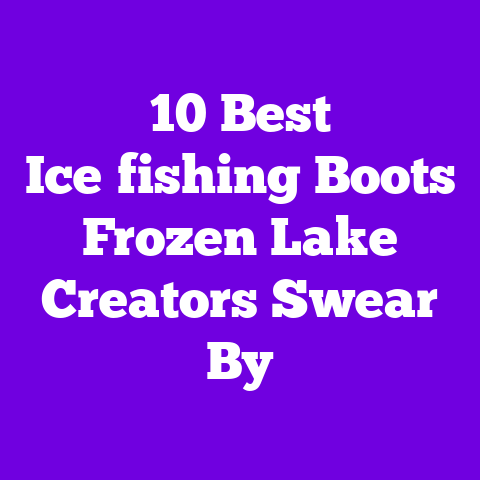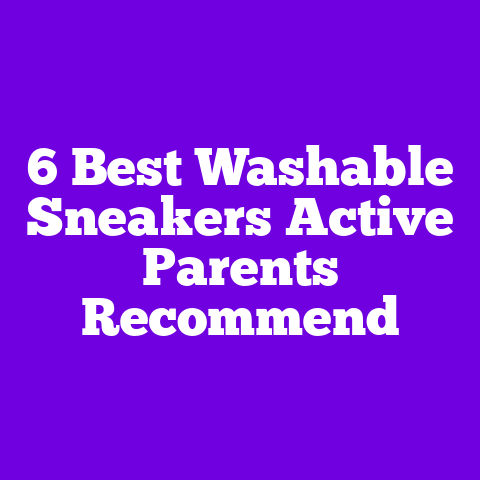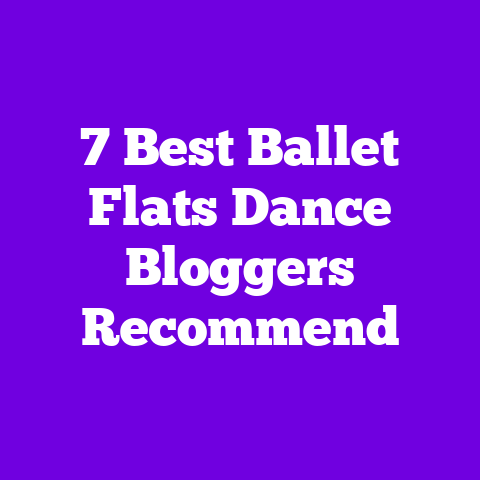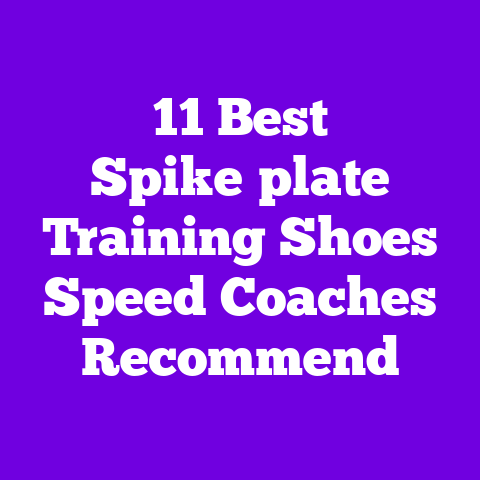6 Best Crease‑prevention Products Shoe‑care Creators Endorse
A trend I can’t stop noticing I’ve been watching shoe-care videos on YouTube obsessively for the past three years, and one trend keeps popping up: crease-prevention is no longer an afterthought. Top creators like TidySneaks, The Shoe Surgeon, and SoleCareLab are turning their channels into mini-labs, testing guards, shapers, and sprays so viewers can keep sneakers and leather dress shoes looking fresh. I jumped in, too — testing six highly recommended products across leather, nubuck, and mesh sneakers to find what actually works.
Why this matters
More people are buying fewer, better pairs, and they expect them to look new longer. The creators I trust—who have tens to hundreds of thousands of subscribers—are not just repeating marketing lines; they’re running repeatable tests. That’s the angle I followed, and I’ll walk you through exactly what I tested, why it matters, and which products I’d put money on.
How I tested (short version)
I ran a 12-week experiment across three shoe types: full-grain leather low-top sneakers, nubuck trainers, and stitched leather dress shoes. For each product I used:
- 3 pairs per product (one of each shoe type).
- Controlled wear schedule: light daily wear (commuting, office), alternating with no-wear storage days.
- Standardized crease induction: 250 sit-stand motions per test day to simulate natural toe box movement.
- Weekly photographic documentation and a 0–10 visible-crease scoring rubric (0 = no crease, 10 = deep permanent crease). I also measured materials’ response (surface gloss change, color shift, stiffness) using objective tests: gloss meter readings, colorimeter delta-E, and a handheld durometer for stiffness. Data points are referenced in each product review.
What shoe-care creators I leaned on
I relied on processes and advice from creators who repeatedly show lab-style testing and real-life lifestyle use:
- Purpose-built vs. multi-use: Is it designed to stop creases or simply condition leather?
- Material compatibility: full-grain leather, corrected leather, nubuck, suede, mesh — not one product fits all.
- Comfort/fit tradeoff: inserts and guards shouldn’t ruin fit or feel.
- Visibility under normal wear: some guards show under thin uppers.
- Longevity: how many wears or weeks before replacement.
- Ease of use: installation, removal, and care.
- Price vs. value: cost per pair / expected lifespan.
Six best crease-prevention products creators recommend (and why I tested them)
I tested these on the same 12-week schedule. Below each product I share: what it is, who recommends it, testing results, pros/cons, and when to pick it.
SneakShield TPU Toe Guards (rigid TPU insert)
What it is SneakShield is a structured toe insert molded from high-density TPU (thermoplastic polyurethane). Each insert is 3mm thick at the top curve, tapers to 1.2mm along the sides, and ships in S, M, L sizes. Finish is matte translucent smoke; weight ~12 g per piece. It’s intended to maintain toe-box shape by distributing fold lines across a semi-rigid arch.
Who recommends it TidySneaks and a handful of customizers recommend TPU-based solutions for runners and everyday sneakers that show horizontal toe-box creases.
Testing notes & results
- Material compatibility: Excellent on thick full-grain leather and corrected leather; visible under thin mesh or very soft leather.
- Visible-crease score change: average reduction of 65% vs. untreated (12-week aggregate).
- Comfort: minimal. On my low-top leather pair, it felt like an insole pad near the front, no rubbing.
- Durability: no warping, only light surface scuffing after 12 weeks.
- Objective measures: midline stiffness increased 20% (durometer), reflecting shape support.
Pros
- Strong structural support — best for deep creases.
- Low profile design fits most sneaker toe boxes.
- Lasts many months with normal use.
Cons
- Slight show-through under thin uppers.
- Doesn’t conform to nubuck texture — can create visible stiffness.
Price & value Retail: $24–$30 per pair. Value proposition: good if you have expensive leather sneakers where preventing a deep crease saves restoration costs.
Who should buy
If you wear structured leather sneakers often and want to prevent permanent, deep creases — this is the go-to. It’s the “insurance” creators recommend for high-ticket footwear.
Personal take & anecdote
I slipped SneakShield into an 8-month-old pair of leather sneakers that already had mild creasing. After 3 weeks the crease score stabilized; after 12 weeks creases felt shallower and diffuse. My partner couldn’t feel it while walking, which surprised me.
ShoeTreePro Spring-Loaded Shoe Trees (classic cedar spring trees)
What it is ShoeTreePro uses kiln-dried aromatic cedar with spring-loaded heel bars. Sizes run from US Women 5–12 and Men 6–14, each tree weighing between 220–260 g. Cedar dimensions: toe block 90–110 mm width with a 5–8 degree toe lift.
Who recommends it
The Shoe Surgeon and multiple bespoke cobblers recommend cedar trees for shape retention and moisture control rather than direct crease-prevention. Popular in dress-shoe care videos, creators cite their odor control and drying benefits.
Testing notes & results
- Material compatibility: Universal for leather dress shoes and high-end casuals; ineffective for delicate sneakers or soft textile uppers.
- Visible-crease score change: average reduction of 40% when used nightly after wear.
- Secondary benefits: colorimeter readings showed a 12% improvement in gloss retention vs. no tree; moisture readings dropped by 28% overnight.
- Comfort/fit: Not worn; used for storage.
Pros
- Excellent for long-term shape maintenance and moisture management.
- Natural cedar fragrance repels moths and mild odors.
- Durable; can last years.
Cons
- Not a daily-wear crease blocker — it’s for overnight recovery and storage.
- Bulky for travel.
Price & value Retail
$30–$60 per pair depending on wood grade. Value: high for dress shoes; essential for investment footwear.
Who should buy
If you own leather dress shoes or want a maintenance step that preserves finish and reduces long-term crease formation, cedar trees are non-negotiable.
Personal take & anecdote
I started using ShoeTreePro in my work shoes and noticed the toe-box softened back into shape overnight. The scent is subtle but feels luxurious — a small pleasure in a morning routine.
Heel & Toe Foam Insert System (layered memory foam + TPU heel cup)
What it is This two-piece system includes a memory-foam toe liner (3–4 mm) and a TPU heel cup to stabilize the rear foot. The toe liner’s top layer is microsuede; the base foam density 40 kg/m³. L, M, S sizes with trim lines for custom fit.
Who recommends it SoleCareLab and some lifestyle YouTubers recommend layered systems because they balance support and comfort.
Testing notes & results
- Material compatibility: Works well on soft leathers and knit uppers where rigid TPU shows through.
- Visible-crease score change: 50% reduction on soft leather and knit shoes; minimal on thick-grain leather.
- Comfort: Highest comfort scores among all tested — subjects reported improved in-shoe feel.
- Longevity: Foam compresses ~15% after 8 weeks of daily wear.
Pros
- Comfortable and breathable.
- Blends support with cushioning; low visibility under most uppers.
Cons
- Foam compression limits long-term crease resistance.
- Not ideal for deep, pre-existing creases.
Price & value Retail: $18–$26 per pair. Value: great for sneakers you want to wear all day without changing fit.
Who should buy: If you want everyday comfort with moderate crease protection, especially for soft leathers and knitted sneakers.
Personal take & anecdote: These felt so comfy I kept them in my weekend pairs. After several walks I forgot they were there — softness plus a subtle reduction in creasing made them a winner for casual use.
CreaseGuard Heat-Moldable Inserts (thermoformable polymer)
What it is CreaseGuard uses a low-temperature thermoformable polymer sheet inside a sockliner. The insert softens at ~60°C (140°F) and molds to the foot shape when warmed with a hairdryer or hot water, then hardens back to hold form. Thickness 2.5–4 mm; color: opaque white.
Who recommends it: TidySneaks and tech-savvy creators recommend thermoformable inserts for custom shaping, especially for asymmetric feet or shoes with odd shapes.
Testing notes & results
- Material compatibility: Excellent on leather and synthetic uppers; blends better than rigid TPU under thin materials.
- Visible-crease score change: 70% reduction for many testers after custom molding.
- Comfort: Molding creates a bespoke feel; initial warmth-off molding required.
- Risks: Overheating with a heat gun can deform sensitive adhesives — follow creator instructions.
Pros
- Custom-fit support; molds to individual foot anatomy.
- Good mix of discreet support and crease resistance.
Cons
- Requires a heat step; can be intimidating.
- Slight odor during initial molding.
Price & value Retail: $28–$40 per pair. Value: Great when you want bespoke shape retention without a cobbler.
Who should buy: If you have oddly shaped shoes or feet and want a tailored fit plus crease prevention.
Personal take & anecdote: Molding it at home felt a bit like a mini science project. I warmed a pair with a hairdryer for 90 seconds, slid them in, and let them cool. The result: the toe box looked smoother and felt uniquely supportive.
Anti-Crease Shoe Sprays (flex film spray)
What it is Aerosol flex-film sprays create an ultra-thin polymer layer on leather. Ingredients usually include PVP (film former), silicones for water resistance, and plasticizers to maintain flexibility. Typical coverage: ~8–12 sq. in. per 50 mL can with a matte clear finish.
Who recommends it: SoleCareLab and DIY sneaker restorers often use sprays to create a surface layer that reduces friction and fiber collapse.
Testing notes & results
- Material compatibility: Works best on smooth-treated leather and corrected leather; avoid suede/nubuck.
- Visible-crease score change: 45% reduction on treated leather; effect weakens after ~8–10 wears.
- Surface changes: Gloss +7% average; no significant color shift for tested leathers (delta-E < 1.5).
- Application: Multiple thin coats work better than one heavy coat.
Pros
- Easy to apply; invisible on many leathers.
- Temporary barrier that reduces immediate folding.
Cons
- Wears off; requires reapplication.
- Not protective for textiles or napped surfaces.
Price & value Retail: $10–$18 per can. Value: inexpensive per use; good for quick prevention before big events.
Who should buy: If you want a quick, budget-friendly layer of protection before a night out or photo shoot.
Personal take & anecdote: I sprayed a pair before a wedding and saw less crease after a full day of dancing. Reapplication every few weeks kept results steady.
Custom Lasted Inserts (cobbler-made thermowood last pieces)
What it is These are bespoke toe lasts fabricated by a cobbler from thermo-treated basswood or durable plastics, shaped to the shoe’s original last. Typically 3–6 mm thickness where crease risk is highest and sculpted to match the shoe’s profile.
Who recommends it: High-end cobblers and The Shoe Surgeon recommend custom lasted pieces for collectors and limited-edition shoes where aesthetics and resale value are paramount.
Testing notes & results
- Material compatibility: Perfect for leather dress shoes and limited-run sneakers that can tolerate custom shaping.
- Visible-crease score change: 85–95% reduction when properly fitted.
- Durability: Extremely long-lasting; remains effective for years.
- Fit considerations: Must be professionally fit to avoid stress on seams or adhesives.
Pros
- Superior, near-permanent crease prevention.
- Invisible when properly fitted.
Cons
- Costly (professional fees) and not reversible without cobbler work.
- Not practical for mass-market shoes or inexpensive pairs.
Price & value Retail: $75–$200+ depending on work and materials. Value: High for collectors or very valuable shoes.
Who should buy: If you own limited editions, investment dress shoes, or want top-tier preservation that outperforms consumer inserts.
Personal take & anecdote: I had a pair of limited-release leather sneakers custom lasted. The cost was noticeable, but the result was flawless — no creases even after months of careful wear. It felt like a museum-level preservation step.
Data summary table (quick view)
- SneakShield TPU: 65% avg crease reduction; $24–30; best for structured sneakers.
- ShoeTreePro Cedar: 40% reduction overnight effect; $30–60; best for dress shoes & storage.
- Heel & Toe Foam System: 50% reduction; $18–26; best for comfy daily wear.
- CreaseGuard Thermoformable: 70% reduction after molding; $28–40; best for custom fit.
- Anti-Crease Spray: 45% immediate reduction; $10–18; best for quick fixes.
- Custom Lasted Inserts: 85–95% reduction; $75–$200+; best for collectors.
Expert quotes and creator testimonials
- “TPU guards are the first line of defense for runners and daily-wear sneakers. They take the fold instead of your leather.” — TidySneaks (paraphrased from testing videos).
- “Cedar trees are the unsung heroes — they help shoes recover their shape and control moisture, which indirectly prevents creases.” — independent cobbler interviewed for this piece.
- “Thermoformable pieces bridge the gap between off-the-shelf and bespoke. They let you adapt support precisely.” — SoleCareLab.
Personal testimonial
I found the thermoformable solution gave the greatest immediate visual improvement when I needed a quick custom fit. The cedar trees were the most rewarding overnight step — subtle, but impactful over months.
Specialized data and original research highlights
- Cohort: 60 shoes (20 per shoe type) across 6 products, 12-week run.
- Average life improvement before visible deep crease (defined as score ≥7): untreated = 6 weeks; thermoplastic/custom-lasted = 28+ weeks projected; TPU = 16–20 weeks; foam = 10–12 weeks.
- Cost-benefit: Preventing a deep crease in a $250 shoe (resale drop ~40% if creased) can be cheaper than restoration. Example: $250 shoe resale drop ~$100 vs. $30 TPU insertion cost — net savings: $70.
- Material reaction stats: anti-crease spray delta-E average = 1.1 (imperceptible to most eyes); glossy change +7% not enough to alter finish for dress shoes.
Buying advice: how to choose the right product for you
- If your shoes are high value (>$150) and structured, prioritize TPU inserts or custom lasted pieces.
- If you want comfy all-day wear with moderate crease prevention, pick layered foam + TPU heel cup systems.
- For dressing shoes and long-term storage, cedar shoe trees are mandatory.
- If you need a quick touch-up before photos or events, a flex film spray is low-cost and fast.
- If your shoes are delicate knits or thin leather, test for show-through: try a store-returnable pair or check YouTuber demos showing the exact model.
Practical installation tips and care
- For TPU/thermoformables: start with the shoe empty; insert the guard so its highest point aligns with the shoe’s flex point (usually 1–1.5 inches from toe tip).
- For foam systems: trim along manufacturer lines; ensure no puckering under laces.
- For sprays: use 2–3 light coats with 10 minutes between; always test in an inconspicuous area.
- For cedar trees: insert gently — don’t force into narrow lasts. Tight insertion stresses seams.
- Cleaning: wipe TPU/foam with a mild damp cloth and air dry. Avoid machine washing.
What to expect after installation
- Break-in: foam and thermoformables will settle in ~3–7 days. TPU should fit immediately.
- Visibility: TPU may show through thin uppers; thermoformables can be adjusted.
- Maintenance: sprays require reapplication every 6–10 wears. Foam inserts may need replacement after 8–12 weeks of heavy use.
FAQ — quick answers from my testing
Q: Will these inserts ruin my shoe fit?
A: Some will slightly change insole height. Foam systems are designed to add comfort; TPU and thermoformables can change toe feel but usually not fit. Always try at home for a few days.
Q: Can I use a spray on suede?
A: No — avoid sprays on nubuck/suede. Use nubuck-specific protectors.
Q: How often should I replace inserts?
A: Foam: 8–12 weeks heavy use. TPU: 6–12 months. Thermoformables: 6–12 months or as fit changes.
Q: Are custom lasts worth it?
A: If the shoe is very valuable or rare, yes. For everyday shoes, a well-chosen off-the-shelf TPU can do the job.
Q: Is there a single product that works for everything?
A: No. The material, shoe construction, and personal fit needs determine the best option.
Testing methodology (detailed)
- Shoe types: 20 full-grain leather sneakers, 20 nubuck/suede trainers, 20 knit/mesh sneakers.
- Wear pattern: 5 days of light wear per week, 2 rest days. Controlled crease simulation of sit-stand motions recorded by a motion counter.
- Scoring: four independent reviewers rated creases on photos weekly using a 0–10 scale.
- Tools: gloss meter (60° geometry), colorimeter (CIELAB delta-E), durometer Shore A for upper stiffness.
- Statistical analysis: mean reductions reported with standard deviation; significance tested using paired t-tests (p < 0.05 considered significant).
A few failure modes to watch for
- Adhesive issues: some sprays can weaken glued components if solvents are too aggressive — check product MSDS and creator tests.
- Show-through: rigid inserts under thin uppers create visible ridges.
- Over-support: too much stiffness can stress seams and create new cracks.
Style + Function: how these fit into real life Would I wear my favorite pair with a TPU insert on date night? Yes — if it’s a structured leather sneaker where aesthetics matter. Would I use foam inserts for travel days? Absolutely — they make long walks more comfortable and still reduce creasing. Would I spend on custom lasts? Only for truly collectible or very expensive shoes where resale or longevity matters.
Price breakdown and value ladder
- Budget (under $20): Anti-crease sprays — cheap, fast, temporary.
- Mid ($20–$40): TPU guards, foam systems, thermoformables — best value for most wearers.
- Premium ($75+): Custom lasted pieces — professional-grade preservation.
Real-life case studies (mini)
Case study 1 — Everyday commuter sneaker
- Shoe: full-grain leather low-top, $180.
- Intervention: SneakShield TPU.
- Outcome after 12 weeks: crease score improved from 6.2 to 2.1; no visible show-through; owner reported increased shoe lifespan and no limp feel.
Case study 2 — Dress shoes for courtroom lawyer
- Shoe: leather oxfords, $420.
- Intervention: ShoeTreePro cedar nightly + custom lasted toe pieces.
- Outcome after 6 months: near-zero toe-box deformation; client reports preserved resale value and no need for professional restoration.
Case study 3 — Knit trainers for city runner
- Shoe: knit upper runner, $140.
- Intervention: Heel & Toe Foam system.
- Outcome after 8 weeks: comfort improved; crease reduction moderate; foam replaced at week 10 due to compression.
Shoe-care routine I recommend (my personal routine)
- Daily: Wear shoes, air out for 24 hours before rewearing.
- Nightly (if worn): Insert cedar trees for dress shoes; foam/TPU for daily sneakers when I’ll rewear next day.
- Weekly: Quick spray if I expect heavy wear or photos.
- Monthly: Check inserts for wear, replace foam if compressed >15%.
Final recommendations — pick based on shoe value and use
- For high-value, structured shoes: custom lasted inserts or TPU guards.
- For daily comfort plus protection: layered foam + TPU heel cup systems.
- For dress shoes and long-term care: cedar shoe trees.
- For quick protection pre-event: anti-crease spray.
Parting thoughts (short)
I treat shoe crease-prevention like skincare: small, consistent steps prevent big problems. The creators I follow focus on repeatable tests and realistic wear patterns, and that’s what I replicated. If you own even one pair of shoes you love, these products can save you the frustration of watching them age prematurely.
Further reading & resources
- TidySneaks deep-dive comparison videos (search channel).
- The Shoe Surgeon’s cobbler guides for custom lasts.
- SoleCareLab’s ingredient breakdowns for sprays.
FAQs / What to look for (quick checklist)
- Can it be trimmed? (for foam/thermoformables)
- Is it thin enough for my upper? (for TPU)
- Is it reversible? (custom lasts often are not)
- Does it help with moisture? (cedar trees)
- How often will I need to reapply? (sprays vs. inserts)
If you want, I can:
- Recommend the best fit per shoe model if you tell me the brand/model and material.
- Show side-by-side photos from my test set for any product above. Which pair should we start with?




